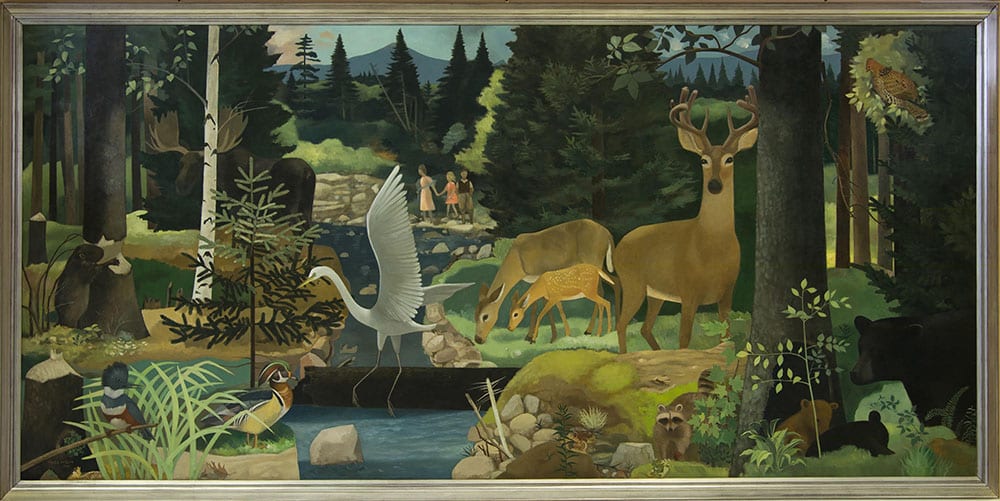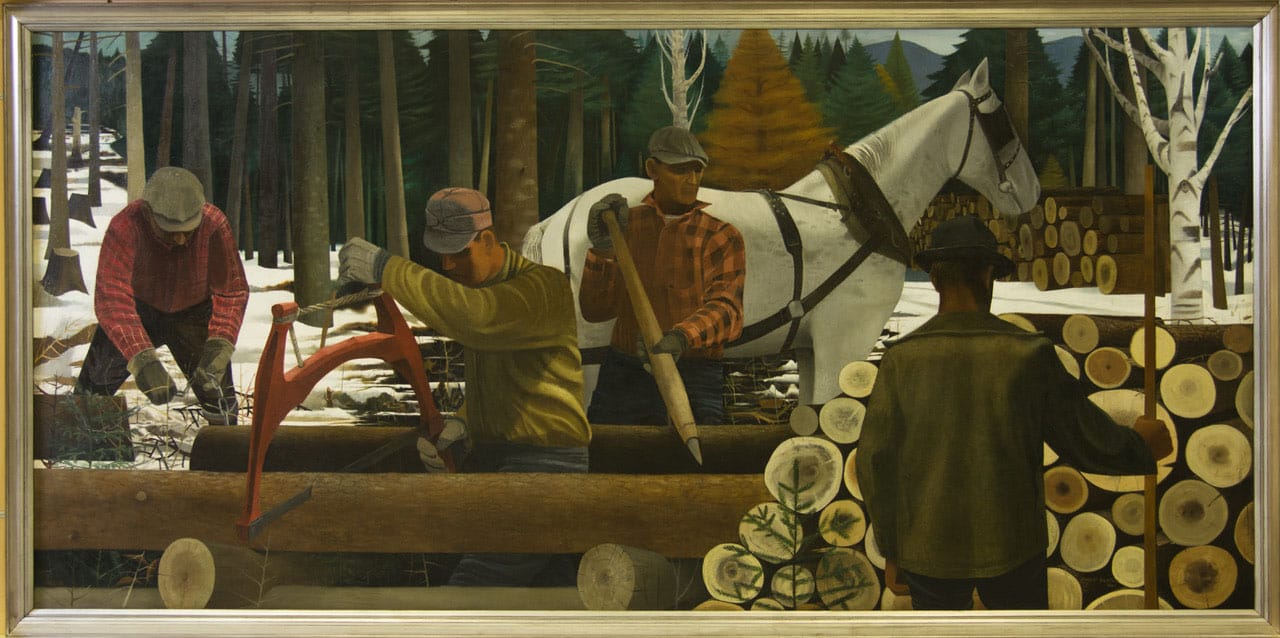History of Art: Philip Guston and Musa McKim at the Currier Museum: “What can be done when America Invests in its Workers and its Artists”

All Global Research articles can be read in 51 languages by activating the “Translate Website” drop down menu on the top banner of our home page (Desktop version).
To receive Global Research’s Daily Newsletter (selected articles), click here.
Visit and follow us on Instagram at @globalresearch_crg.
***
Currently on view at the Currier Museum, Philip Guston’s mural Pulpwood Logging (1941) is right beside its original partner, Musa McKim’s Wildlife in the White Mountains (1941). Both fourteen-foot murals were commissioned by the Works Progress Administration (WPA) — a federal program created by Franklin Delano Roosevelt to combat the unemployment of the Great Depression — and were originally installed in the Forestry Building in Laconia, New Hampshire.
Guston’s mural is a vision of sustainable logging — and given the global pace of deforestation, it is as timely as ever. As a representational painter, the piece is the culmination of Guston’s work for he would soon go on to become one of the foremost Abstract Expressionists.

Wildlife in the White Mountains, 1941
oil on canvas
79 x 165 in.
Originally located in the Forestry Building, Laconia N.H.
Fine arts collection U. S. General services
Source: Currier Museum of Art
The mural is a depiction of four men working together – all but one of whom face the viewer. The one with his back to us is overseeing the day’s work. Interestingly, we see what he sees: as if he is showing us the logging process. To his left, a man uses a peavey to roll the logs into place, while another cuts a log with a crosscut handsaw. The leftmost figure is hunched over as he lays a link chain in place. Guston has made each worker distinct and in so doing, imbued each individual with a quiet dignity.
In 1937, Musa McKim and Philip Guston were married. Her mural, depicting the rich biodiversity of New Hampshire’s White Mountains, rewards one who pays close attention. She has rendered the grouse, deer, moose, bear, beaver, raccoon, chipmunk, wood duck, great egret, and belted kingfisher with a simple and loving fidelity. In the lower right corner, a family of three visitors to the National Forest — presumably a mother, and her two children – resonates with the mother bear and her two cubs in the lower right corner.

Pulpwood Logging, 1941
oil on canvas
79 x 165 in.
Originally located in the Forestry Building, Laconia N.H.
Fine arts collection U. S. General services Administration
Source: Currier Museum of Art
Through January 16, these two murals will be happily reunited at the Currier Museum in Manchester, NH — and the timing is significant. These great works were the fruit of The New Deal and the efforts of the WPA which hired over ten thousand artists from across the country to create works of art.
Today, many Americans desperately need to see a similar initiative from the Federal Government — and yet, even relatively modest efforts in that direction have been stalled indefinitely. These murals are a reminder of what can be done when America invests in its workers and its artists — that is, when it truly embraces and harnesses its powers of collective rebirth and reinvention.
*
Note to readers: Please click the share buttons above or below. Follow us on Instagram, @crg_globalresearch. Forward this article to your email lists. Crosspost on your blog site, internet forums. etc.
Sam Ben-Meir is a professor of philosophy and world religions at Mercy College in New York City. He is a regular contributor to Global Research.
Featured image is from Currier Museum of Art

